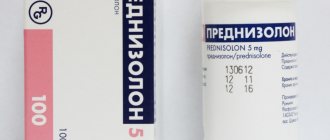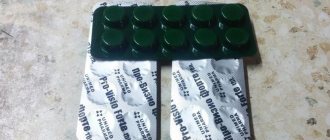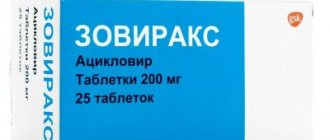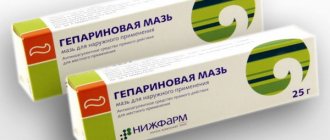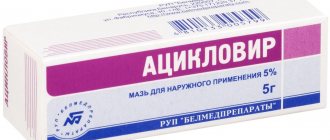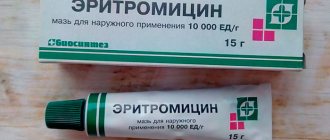Pharmacological authorities
Pharmacodynamics.
Benzyldimethyl[3-(myristoylamino)propyl]ammonium chloride monohydrate is a cationic surface-active substance with antimicrobial (antiseptic) action.
The basis of the action of Okomistin® is the direct hydrophobic interaction of the molecule with the lipids of the membranes of microorganisms, which leads to their fragmentation and destruction. When a part of the molecule of the active molecule, embedded in the hydrophobic part of the membrane, collapses the epimembrane ball, fluffs up the membrane, increases its penetration for high-molecular molecule, changes the enzymatic activity of the microbial cell Itinhibits enzyme systems, which inhibits the life of microorganisms and their cytolysis.
In contrast to other antiseptics, Okomistin® has a high selectivity of aqueous microorganisms, and the fragments practically do not affect human cell membranes. This is the effect of binding to the different structure of human cell membranes (a significant increase in lipid radicals, which sharply reduces the possibility of hydrophobic interaction between the cell and cell membranes).
Okomistin® has a pronounced antimicrobial activity against clearly gram-positive and gram-negative, aerobic and anaerobic, spore-forming and asporogenous bacteria in the form of monocultures and microbial associations, including hospital specimens with polyresistant to antibiotics.
It is harmful to everyday illnesses that are transmitted by state methods - gonococci, treponemas, trichomonas, chlamydia, as well as herpes viruses, human immunodeficiency.
Carry out antifungal action on ascomycetes of the genus Aspergillus
and the genus
Penicillium
, yeasts (
Rhodotorula rubra, Torulopsis gabrata
) and yeast-like (
Candida albicans, Candida krusei
) fungi, dermatophytes (
Trichophyton rubrum, Trichophyton mentagrophytes, Trichop phyton verrucosum, T. schoenleinii, T. violaceum, Epidermophyton Kaufman-Wolf, E. floccosum, Microsporum gypseum, Microsporum canis
), as well as other pathogenic fungi (for example,
Pityrosporum orbiculare (Malassezia furfur
) in the form of monocultures and microbial associations, including fungal microflora with resistance Stay before chemotherapy drugs. Under the influence of Okomistin® the resistance of microorganisms to antibiotics decreases. specific protection due to the modulation of the cellular and local humoral immune pathways, which accelerates the disease.
Pharmacokinetics.
Okomistin® exhibits local action. Data about the possibility of penetration of the drug into the systemic bloodstream on a daily basis.
Pharmacodynamics and pharmacokinetics
Due to the content of the active antiseptic component benzyldimethylmyristoylaminopropylammonium , Okomistin has a pronounced antimicrobial effect. It is worth noting that the drug is capable of combating both gram-negative, gram-positive, anaerobic and aerobic bacteria, as well as entire microbial associations, for example, hospital strains that are multi-resistant to potent antibiotics.
Eye drops can combat ophthalmic diseases caused by adenoviruses , pathogenic fungi, chlamydia and herpes virus . Studies have shown that this drug is most effective in treating staphylococcal , as well as streptococcal infections and diseases caused by other gram-positive bacteria. In addition, the drug helps reduce the resistance of harmful fungi and bacteria to the effects of antibiotics.
Not absorbed into the skin and mucous membranes.
Showing
In complex treatment of infectious processes of the anterior eye (blepharitis, conjunctivitis, keratitis, keratouveitis) caused by gram-positive and gram-negative bacteria, chlamydia, fungi and viruses sensitive to Okomistin y®, eye injuries, eye injuries (thermal and chemical).
Prevention of neonatal ophthalmia, including gonococcal and chlamydial.
Prevention and treatment of purulent-inflammatory eyes in the pre- and post-operative period.
For complex treatment of acute and chronic otitis externa, chronic purulent mesotympanitis, otomycoses.
In complex treatment of acute rhinitis.
Indications for use
The drug is recommended for use in the treatment of:
- keratouveitis;
- blepharitis;
- blepharoconjunctivitis;
- chronic conjunctivitis , including in the acute phase of the disease;
- eye injuries and burns;
- keratitis.
The drug can be used as a prophylactic agent to help avoid the formation of purulent-inflammatory complications in the postoperative period. In addition, Okomistin is used in preparatory measures for surgery.
Also used for sinusitis , rhinosinusitis , otitis .
Method of congestion and dosage
Ophthalmology
For the treatment of infectious processes in the anterior eye
for adults and children under 12 years of age, instill 2-3 drops in the conjunctival sac, for children under 12 years of age – 1-2 drops 4-6 times per serving. The triviality of the treatment does not outweigh 2 years.
By preventing complications in the pre- and post-operative periods
– 2-3 drops 3 times per day 2-3 days before surgery. After the operation - for 3-5 days, 1-2 drops 3 times per day.
When cleaning the eyes
, after rinsing the eye with a large amount of water, carry out partial instillation (5-10 skin sections) for 1-2 years. For further treatment, administer the drug to adults and children up to 12 years old, 2-3 drops each, for children up to 12 years old – 1-2 drops, 4-6 times per dose.
For the prevention of ophthalmia in newborns
Immediately after birth, instill 1 drop of the drug into the skin 3 times at an interval of 2-3 weeks.
Otolaryngology
For treatment of acute and chronic external otitis, otomycosis
For adults and children over 12 years of age, instill 3-5 drops 4-6 times per dose; for children up to 12 years of age - 2-3 drops 4-6 times per serving.
In the external auditory canal, gauze turunda soaked in the drug can be injected 4-6 times per day over a period of 10-14 days (instead of instillation).
For chronic mesotympanitis
To use a comprehensive treatment with the help of ultrasonic equipment or to administer antibiotics to the drum at the same time.
For treatment of acute rhinitis, infection of the nasal mucosa
instill 2-3 drops in adults and children under 12 years of age, 1-2 drops in children up to 12 years of age, 4-6 times per day. Likuvannya course – 7-14 days.
Particularities of dosing.
The exact dosage can be reached by pressing on the bottom of the bottle - one pressing = 1 drop.
Children.
The drug can be used in pediatric practice.
Okomistin price, where to buy
The price of Okomistin eye drops (a bottle with a nominal volume of 10 ml) does not on average exceed 200 rubles.
- Online pharmacies in RussiaRussia
- Online pharmacies in UkraineUkraine
ZdravCity
- Okomistin eye drops, ear drops, nasal drops 0.01% dropper bottle 10 ml Infamed K LLC
151 rub. order
Pharmacy Dialogue
- Okomistin eye drops 0.01% 10mlInfamed
189 rub. order
show more
Pharmacy24
- Okomistin 0.01% 10 ml drops PAT "Farmak", Ukraine
71 UAH. order - Okomistin 0.01% 5 ml drops PAT "Farmak", Ukraine
44 UAH order
special instructions
Before you start using the medicine, it is important to pay attention to the following special instructions:
- The drug is intended for instillation into the eyes; its oral or parenteral administration is excluded.
- Before using eye drops, wash your hands thoroughly with soap.
- Before instilling eye drops, it is necessary to remove contact lenses; their reinsertion is allowed no earlier than after 15 minutes. In general, it is recommended to temporarily stop wearing contact lenses during the course of drug treatment.
- It is important to ensure that the tip of the dropper bottle does not touch your hands, surrounding objects and the surface of the eye, as this may cause the subsequent development of infectious complications.
- The active and auxiliary components of the drug do not affect the functional activity of the structures of the central nervous system.
- Immediately after instillation of the ophthalmic solution, temporary “blurred” vision is possible, so potentially dangerous work can be performed no earlier than 15 minutes later.
Analogs
Oftaklin
A structural analogue of the drug, which is produced in the dosage form of eye drops and contains miramistin. The medicine has an antiseptic pharmacological effect and is used to treat infectious pathologies of various eye structures in adults and children, regardless of age. After the appointment of the attending physician, the use of the medication for pregnant and breastfeeding women is allowed.
Oftamirin
Eye drops, the main active component of which is miramistin. They have an antiseptic pharmacological effect and are used to treat infectious and inflammatory eye pathologies. The drug is prescribed to adults and children regardless of age category. The medication can be used during pregnancy and breastfeeding.
Phloxal
A medicine that has a similar pharmacological effect. It comes in the form of eye drops and contains the antibacterial compound ofloxacin. The drug is prescribed for the treatment of infectious bacterial eye pathology caused by bacteria sensitive to the active substance. It can be used in adults and children from birth. The use of the drug during pregnancy and breastfeeding is not recommended.
Contents of the employment contract
According to Article 57 of the Labor Code of the Russian Federation, the document must contain the following information:
- FULL NAME. employee and name of the employing company;
- passport details of the employee (and the employer, if he is an individual);
- employer's tax identification number;
- date and place of signing the employment contract.
The following information regarding a person’s professional activity is required to be included in the document:
- place of work. Usually this is the organization itself. If the organization has structural divisions, then the place of work is considered to be the division specified in the employment contract;
- position according to the staffing table;
- start date of work (if a fixed-term contract is concluded, its validity period is indicated);
- terms of remuneration (including tariff rate, additional payments, allowances and incentive payments);
- work and rest schedule. If they differ from the general rules established in the organization, then they need to be discussed with the job applicant;
- guarantees provided by the employment contract;
- nature of the work;
- working conditions in the workplace.
It may also include the rights and obligations of the employee and employer established by the Labor Code and internal regulations of the organization.
In addition, additional conditions may be included in the employment contract:
- about the probationary period;
- on non-disclosure of trade secrets;
- on non-disclosure of secrets protected by law;
- on the types and conditions of additional employee insurance;
- on the employee’s obligation to work for a certain period of time after training, which was carried out at the expense of the employer;
- about financial liability and others.
This data must be contained in the employment contract (sample 2021, available in our material). The completed document is signed by the parties. For failure to comply with the rules for drawing up a contract, a labor inspector may be subject to an administrative fine in the event of an inspection of personnel documentation.
If changes need to be made to it, the new information can be drawn up in the form of an additional agreement.

